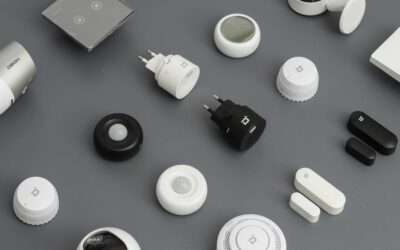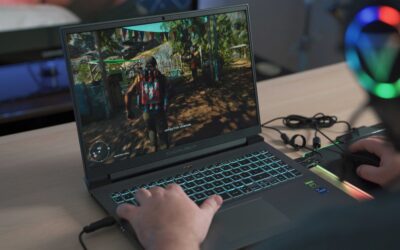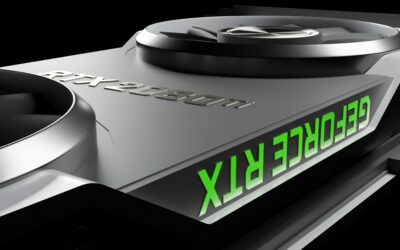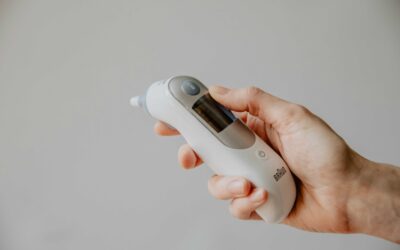Introduction
A Gaming laptop cooling pad is a crucial accessory for enhancing airflow, preventing overheating, and maintaining peak performance during intense gaming sessions. Overheating can lead to thermal throttling, which reduces FPS and may shorten hardware lifespan. This guide covers all aspects of choosing the best cooling pad by considering airflow, noise levels, compatibility, build quality, and budget.
How Do Cooling Pads Work?
Cooling pads improve thermal management using two primary mechanisms:
- Active Cooling: Uses built-in fans to direct cool air towards the laptop’s ventilation system.
- Passive Cooling: Elevates the laptop to enhance natural airflow without fans.
Key Features of a Gaming Laptop Cooling Pad
- Built-in Fans: Improve airflow and reduce internal temperatures.
- Ergonomic Design: Angled structures improve ventilation and typing comfort.
- Heat-Dissipating Materials: Metal or mesh surfaces enhance cooling efficiency.
Key Factors Affecting Cooling Pad Performance
1. Fan Configuration & Airflow
- Fan Size & Number: Larger fans (e.g., 200mm) move more air but can be noisier.
- Adjustable Fan Speeds: Higher speeds provide better cooling but generate more noise.
- Vent Placement: Ensure fans align with the laptop’s intake vents.
2. Build Quality & Design
- Material: Metal cooling pads dissipate heat better than plastic models.
- Portability: Slim, lightweight models are travel-friendly but may have weaker cooling performance.
- Ergonomics: Adjustable height settings enhance airflow and comfort.
3. Compatibility
- Laptop Size: Ensure the cooling pad fits your device (e.g., 15-inch vs. 17-inch laptops).
- USB Power Requirements: Some cooling pads draw power from the laptop, affecting battery life.
4. Noise Levels
- High-speed fans offer superior cooling but may be noisy.
- Passive cooling pads are silent but less effective in heat dissipation.
Trade-offs & Challenges
1. Cooling Power vs. Noise
- More fans improve cooling but may increase noise.
- Solution: Choose a model with adjustable speeds or noise-reduction technology.
2. Portability vs. Performance
- Slim cooling pads are easy to carry but may lack high-powered fans.
- Bulkier models provide superior cooling but are less portable.
3. Cost vs. Features
- Budget Models ($20–$40): Basic plastic build, limited airflow control.
- Premium Models ($60–$100): Metal construction, RGB lighting, customizable fan speeds.
4. Aesthetics vs. Functionality
- RGB-lit pads enhance aesthetics but do not necessarily improve cooling.
- Performance should be the primary focus if overheating is a concern.
How to Choose the Best Gaming Laptop Cooling Pad
- Prioritize Airflow – Look for large, adjustable fans for better heat dissipation.
- Check Compatibility – Ensure the pad fits your laptop size and vent placement.
- Consider Noise Levels – Opt for quieter models if gaming in a silent environment.
- Evaluate Build Quality – Metal bases are more durable and improve heat transfer.
- Balance Budget & Features – Mid-range pads ($30–$50) provide the best mix of performance and value.
Best Gaming Laptops Cooling Pad
| Model | Fan Size | Adjustable Speeds | Noise Level | Price Range |
|---|---|---|---|---|
| Cooler Master Notepal U3 Plus | 80mm x 3 | Yes | Medium | $50–$70 |
| KLIM Wind Laptop Cooling Pad | 120mm x 4 | Yes | Low | $30–$50 |
| Havit HV-F2056 | 110mm x 3 | No | Low | $20–$40 |
Compare the best gaming laptop cooling pads on Amazon
Limitations of Cooling Pad
- Not a Permanent Fix – Cooling pads help, but proper internal cooling is essential.
- USB Power Dependency – Some pads use laptop power, reducing connectivity options.
- Variable Effectiveness – Performance varies based on laptop design and room temperature.
FAQ Section
1. Do Cooling Pads Actually Reduce Laptop Temperatures?
Yes, high-quality cooling pads can reduce temperatures by 5–10°C, preventing thermal throttling.
2. Can a Cooling Pad Improve Gaming Performance?
Indirectly, yes. Lower temperatures prevent FPS drops caused by thermal throttling.
3. Are Cooling Pads Better Than Laptop Stands?
Cooling pads actively reduce heat, while laptop stands only improve passive airflow. For gaming, cooling pads are better.
4. Do Cooling Pads Extend Laptop Battery Life?
They can help by preventing excessive heat, which degrades battery cells over time.
5. Which Cooling Pad is Best for a 17-inch Gaming Laptop?
Models like Cooler Master Notepal U3 Plus or KLIM Wind are ideal due to their adjustable fans and high airflow.
Conclusion
A gaming laptop cooling pad is an essential tool for reducing overheating and maintaining performance. Active cooling pads with large, adjustable fans provide the best results, while passive cooling pads are ideal for noise-sensitive environments. For maximum effectiveness, combine a cooling pad with regular laptop maintenance like cleaning vents and applying fresh thermal paste.
Check out our guide on laptop maintenance for long-term performance






